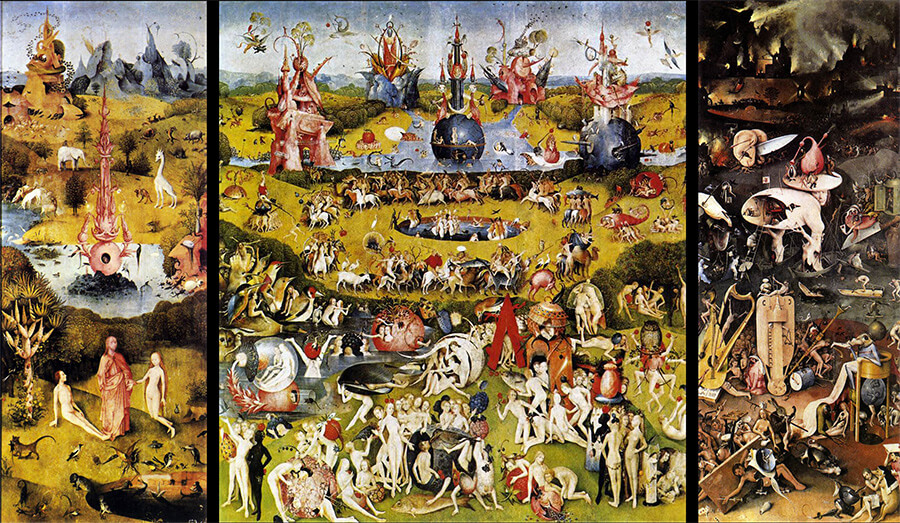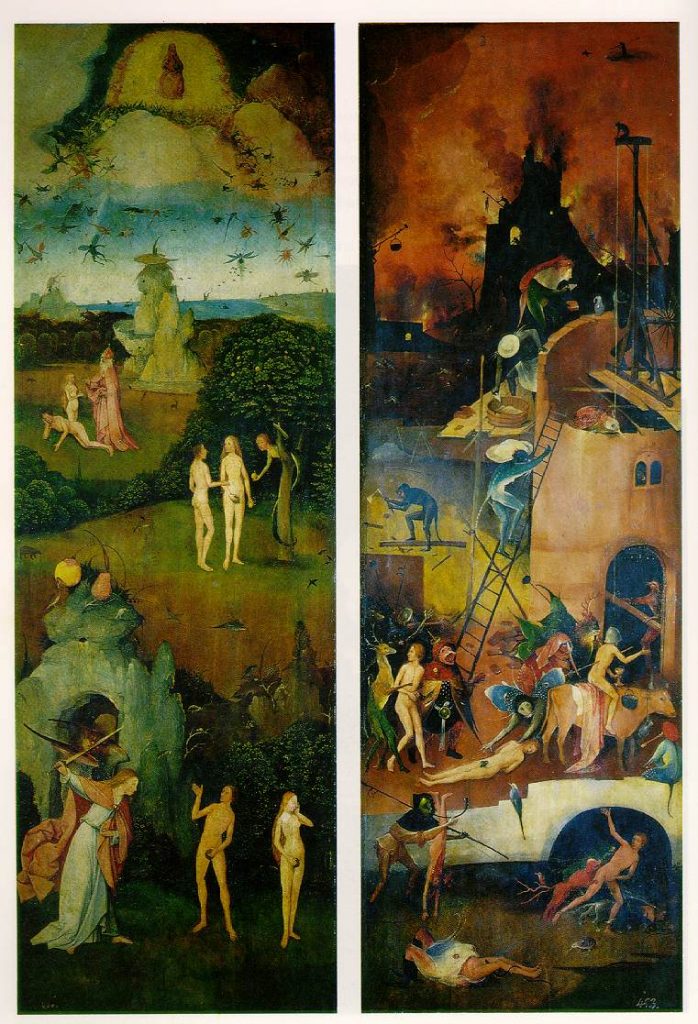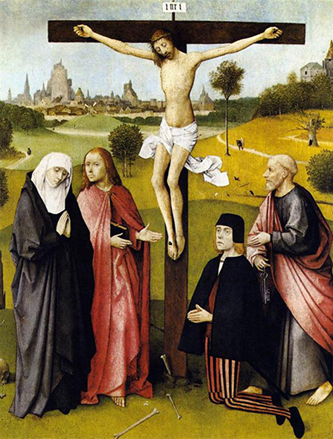Hieronymus Bosch

Hieronymus Bosch, born on 1450 as Jerome van Aken, was the Dutch son of accomplished painters. His renowned name is derived from his hometown, known as s’Hertogenbosch.

A master of the unreal, he was referred to as a “creator of devils” for his depictions of evil in his paintings. Bosch tended to combine fantasy with reality, painting fictional apocalyptic scenes with supernatural and human figures.

His works were religious, usually seen as sermons centred on sin. Bosch’s early works indicate influences from artists such as Rogier van der Weyden.

Bosch was rather pessimistic and stern, with critics believing he was a practitioner of the occult arts, and affiliated with secret groups due to his depictions of evil. Most historians disagree with this since Hieronymus was Catholic and well respected by his neighbours and peers.

This piece was owned by King Philip II of Spain who admired Bosch’s work.
Hieronymus later died on August 9, 1516, ending with a successful career and (as written in official records) the title of “Insignis Pintor” or distinguished painter. A proper title for a master of imagination.
Today, Bosch is viewed as a talented artist with insight into human character. He is considered the first to artistically depict abstract concepts and is often imitated by many artists.
WORKS CITED
- Gombrich, E.H. “The New Learning Spreads: Germany and the Netherlands, early sixteenth century.” The Story of Art, by Ernst Hans. GOMBIRCH, 16th ed., Phaidon, 1995
- “Bosch, Hiëronymus.” Britannica Concise Encyclopedia, Encyclopaedia Britannica, Britannica Digital Learning, 2017. Credo Reference, https://search-credoreference-com.ezproxy.capilanou.ca/content/entry/ebconcise/bosch_hieronymus/0. Accessed 28 Sep. 2019.
- “Bosch, Hieronymus (c. 1450 – 1516).” The Bloomsbury Guide to Art, edited by Shearer West, Bloomsbury, 1st edition, 1996. Credo Reference, https://search-credoreference-com.ezproxy.capilanou.ca/content/entry/bga/bosch_hieronymus_c_1450_1516/0. Accessed 28 Sep. 2019.
- “Tabletop of the Seven Deadly Sins and the Four Last Things (oil on panel).” Bridgeman Images: The Bridgeman Art Library, edited by Bridgeman Images, 1st edition, 2014. Credo Reference, https://search-credoreference-com.ezproxy.capilanou.ca/content/entry/bridgeart/tabletop_of_the_seven_deadly_sins_and_the_four_last_things_oil_on_panel/0. Accessed 28 Sep. 2019.
- Kuiper, Kathleen. “Hiëronymus Bosch.” Encyclopædia Britannica, Encyclopædia Britannica, Inc., 5 Aug. 2019, www.britannica.com/biography/Hieronymus-Bosch.
IMAGES OBTAINED FROM
- www.hieronymusbosch.net/the-garden-of-earthly-delights/
- https://www.spikeartmagazine.com/en/articles/whats-so-contemporary-about-hieronymus-boschs-apocalyptic-visions
- https://en.wikipedia.org/wiki/Paradise_and_Hell#/media/File:Jheronimus_Bosch_115_inner_wings.jpg
- www.hieronymusbosch.net/crucifixion-with-a-donor/.
- https://search-credoreference-com.ezproxy.capilanou.ca/content/entry/bridgeart/tabletop_of_the_seven_deadly_sins_and_the_four_last_things_oil_on_panel/0